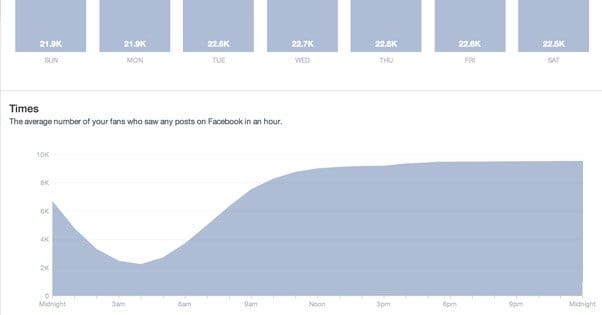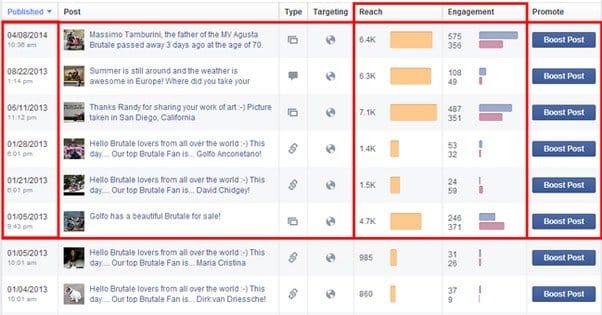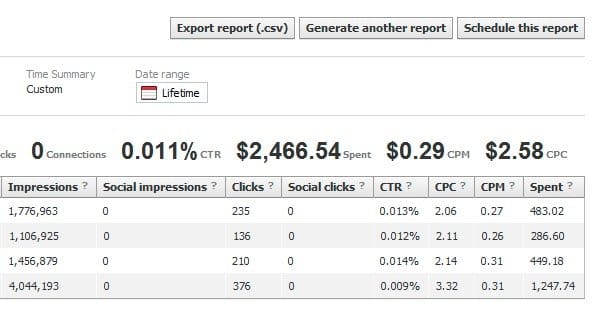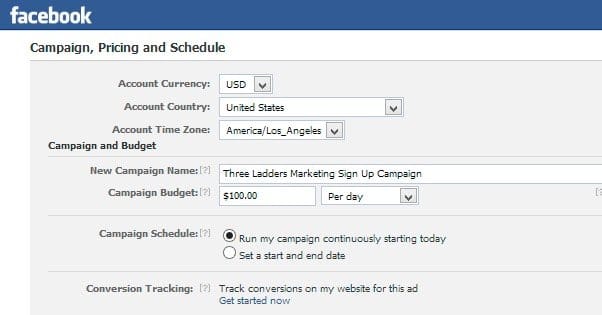 Written by ContentPowered.com
Written by ContentPowered.com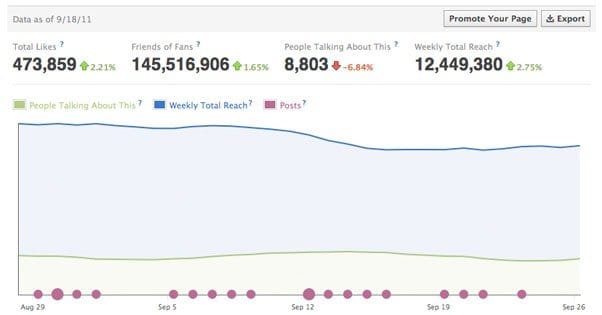
As marketers, we always want our growth to be slow and steady. Fast growth can be good, but if you’re not prepared for it, a lot of the value can be wasted. That’s not a problem for many businesses, though, because the ideal growth rate is very rarely the actual growth rate. More typically, you’ll grow in fits and starts, as you experiment with different marketing techniques and content types.
This means you will see short, sharp rises in growth rate, and you’ll see long periods of mediocre growth or even stagnation. You’ll reach plateaus in your growth that seem impossible to rise past. Rather than struggle fruitlessly by throwing strategies against the wall, I have some suggestions for you.
First of all, I don’t mean to say that a Facebook page growth plateau is a complete lack of any growth. It can just mean that you’re growing very slowly, at a rate of 1-2 followers per week. For reference, the average growth rate for a page is .64% per week, which is around 25 fans per month if you have 1,000 followers. By contrast, a very good growth rate – the top in this study, in fact – is around 88 per month on a page with 1,000 followers, or 2.22%.
You can still grow while struggling with a plateau. You just might have to make some tough decisions or step outside your comfort zone.
Make Sure Your Plateau is Real
The first thing you want to do is make sure your growth plateau is actually a plateau. Embarrassing as it is, I’ve seen numerous businesses complain about plateaus when they were just looking at their data in the wrong light.
First, look at your data. What does it look like over a longer time period? You might be experiencing a “plateau” that is only a few days long, as part of a longer trend of growth. A certain amount of spikes, plateaus, and declines is natural for the growth of a site or a page over the course of months.
If you’re seeing stagnant growth over a period of weeks, take a look at the calendar. Are you sure you’re not just fading back to normal growth after a period of excess growth spurred on by a seasonal marketing campaign or a special event? If a bunch of highly targeted ads are nearing the end of their terms, or have ended recently, it can account for a growth plateau.
Another piece of data you can look at is referrals to your site, or more importantly, conversions. A growth plateau on Facebook isn’t all that important if your site traffic and conversions are still going up. It might mean that you need to focus your efforts elsewhere to get a better ROI, or it might mean you can leverage Facebook to make everything grow that much more.
While you’re at it, check your post engagement and reach. If your follower count has stagnated, but your engagement is growing, that’s fine. What good is another 100 followers if none of them care to engage? A higher percentage of engaged users is arguably better for your business than a higher raw number, as long as the difference is minor enough. Obviously, if you have reasonably targeted fans, you’ll prefer 1,000,000 over 1,000. It’s just that if you have that million, but only 50 of them are actual real fans, the rest aren’t doing you any good.
Another route to check is the same time period last year. Social media has ebbs and flows, like the tides in the ocean. It’s entirely possible that you’re just in the midst of a seasonal lull you didn’t realize existed. Maybe you weren’t paying as close attention last year. Who knows.
How much have you grown since the same time last year? Generally, if you’ve grown 20-25% since the same time last year, you’re doing alright regardless of a plateau. You’ll work out of it, one way or another. If you’re new enough that you’re used to seeing growth numbers like 75% or 100% over a year, well, that’s not going to last. It’s unsustainable growth.
Identify What Changed at the Start of the Plateau
- I’m going to ask you a bunch of questions here, and I want you to go back and think about the answers. Chances are, if you did something – or stopped doing something – to cause the plateau, one of these questions will help you identify it.
- Did you change in some way the way you create your content? If you changed your content creation process, you might have changed something fundamental about your content that people liked, such as the flow of your posts, the level of detail, or even the graphic design that went along with them. This is particularly true if you changed freelancers or ghostwriters.
- Did you change in some way the way you promote your content on Facebook? If you’re promoting your content less often, and the content of others more often, you will most likely suffer. If you’re promoting less in general, or if you’re being more self-promotional, Facebook won’t share your posts as much and you’ll get less reach and less growth out of your content.
- Did you change the method of presentation of your content, for example from infographic to video? You might have a large portion of users who don’t like certain kinds of content. I know a lot of users aren’t necessarily fans of Facebook video, or they don’t have time to listen to long podcasts, so if you changed away from articles they can skim to media they can’t, you’ll lose their interest.
- Did you change topics, either intentionally or gradually and accidentally? This can be a cause of a long-term growth plateau; in your intent to broaden your userbase, you’ve moved away from the topics that grew your audience in the first place. It might be time to do a content audit and go back to your roots.
- Did an ad campaign end? This is a simple cause of a growth plateau, particularly if you notice that most of your new followers came from actions associated with ads. If your ad campaign ended, or your budget capped out, you’re not going to get those incoming users, and it will look as though your growth has stalled out.
- Did an ad campaign start? Very rarely, running ads will backfire on you. This is most common when you’re running promoted posts that users really don’t like; they’ll see a distasteful subject, associate it with your brand, and make a note to avoid your brand because of it. This is usually an issue with how you’re approaching content, like if you’re trying to newsjack something you shouldn’t.
- Did you dial back on the amount you spend on advertising? All of the same reasoning and rationale from when you end a campaign comes up from dialing back on your budget as well. Less money means less users seeing your ads, which means less growth. On the plus side, it’s an easy fix.
- Did you change the targeting on your ads in some way? You might have started to target a less effective audience, so they see your posts but don’t care as much. This will result in a higher reach, but a lower rate of engagement and follows. You save money with broader targeting, but you also grow less. The trick is to strike the right balance in the middle.
- Did you stop curating content, either from a particular source or in general? If a lot of your users were being attracted to your page because of content you curated from a specific source – either because they like that source or because the content was high quality – cutting off that content will lead to less growth.
- Did you start curating content, in a way that could turn off users? If you’re in the enviable situation where users are coming to your page specifically for your content, and not for the pithy memes and curated content you share, increasing curation – thereby decreasing your own post frequency – will turn users away.
- Did you go through a rebranding? Chances are if your growth has stalled out due to a rebranding, you’re not going to be thinking very hard about the cause. Rebranding makes some users skeptical; they don’t recognize you, they’re not sure if they like your content, and in general they just want you to change back. Thankfully, this is a pretty rare case. Most businesses don’t rebrand all that often.
- Did you change your voice, persona, or personality for your audience? If you’ve suddenly decided that your former voice was too stuck up and you want to be more casual, the abrupt change in tone can drive users away. Always try to make changes in voice more slowly, so users have time to adjust and get used to the new you.
- Did something major happen in your market that would reduce user interest or draw them away from you? For example, if you’re selling e-cigs and the FDC makes a major ruling that hurts the availability of your product, your growth will drop. Alternatively, if a large competitor enters your niche and starts working to drive you out, you’ll lose growth because of that competition.
- Did you reach a point of market saturation, where further growth is difficult or impossible? This is most likely in small niches, like if you have a very niche use software for specific businesses in small industries. As passionate as you are about it, there’s not much growth in the pressure valves industry.
- Did you lose the support of a partner or referrer that was sending significant traffic your way? If you lost a sponsor, if a prominent link was removed from an authority site, or if some other partnership is removed, you can lose a significant source of traffic. If this happens, you won’t have those incoming users following you, and your growth will drop off.
- Have any significant traffic sources dried up recently? If you were getting a lot of your users from an app, or from Twitter, or from a specific set of blog posts that have become obsolete, your growth will stall out when that traffic source falters. That’s why it’s always important to stick with any strategy you use to good effect.
- Did you cancel or otherwise restrict or stop selling a specific product that was drawing interest? If you sell four products, and 90% of your users are finding you because of one of them, it doesn’t make sense to discontinue that product. Sometimes you have to, though, if the manufacturer folds or if your stock dwindles. The lack of availability will make users look elsewhere.
- Has your reputation been harmed by a recent bit of negative PR or bad reviews? It might be worth getting a quote from a reputation management firm specifically because they will do an audit and should give you a report of what needs attention. They can identify pain points in your reputation that you need to address, with or without their services, to maintain your growth rate.
- Are your customers primarily mobile users, and are you ignoring them? Facebook’s userbase is constantly growing, but mobile is growing faster than ever. Over half of all Facebook users browse at least partially via mobile devices. If for some reason your mobile compatibility has dropped – like if you’ve started using more multimedia that isn’t accessible via mobile – you’ll lose out on those potential followers.
Avoid the Sunk Cost Fallacy
The first rule, once you identify something you’re doing that is killing your growth, is to kill it without remorse. If you do not, and you justify it because of the amount of time and money you have put in, you’re falling for the sunk cost fallacy.
The sunk cost fallacy is simple. If you put $1,000 into a project, but it’s not returning any value to you, what do you do? You kill the project. If you think to yourself, “I’ve put a lot of money into it, let’s just keep going, it’ll work eventually,” you’re falling for the sunk cost. Money invested, with no return, is money wasted. Trying to push forward on the expectation of future results is just going to waste more money.
Look Back to What You Posted Last Time You Grew
Sometimes, if you’ve noticed a shift in your content promotion or content strategy that has hindered growth, the easiest thing to do is just look back to the last time you were growing at a good pace. What were your popular posts? What methods were attracting the most users? Did you have a good ad campaign running? Once you identify what you were doing, you can strive to do it again, with a twist for a new audience. It gets hard with ad campaigns, because they have a natural life span. Not everyone can be M&M, running the same commercial for 20 years.
Experiment with Alternate Content Types
Sometimes, the root cause of your growth plateau is just stagnation. You’ve been doing the same thing for so long that it has become second nature, and people have started to grow tired of it. The best course of action is to shake things up, and one of the easiest ways to do that is to vary the types of content you’re using. Try turning a blog post into a video, or a video into an infographic, or an infographic into a slideshare, or all of the above. Measure how these new types of content perform, and invest more heavily in the types of content that perform well.
Curate More Content
Every piece of content you post or share is a chance for users to visit your page, though it’s often better to curate content in the form of links than it is to share posts. The more content you post, the more people see content you’ve posted, and the more people will come in to like your page in response. One of the best ways to break out of a growth plateau is just to invest more heavily in the platform, using it more so that more people take notice of you. It’s easy to scale back based on current ROI, but you also have to consider future ROI.
Increase Your Ads Budget
You have to spend money to make money. You can’t sell a product without investing in the research, development, manufacturing, and advertising of that product. Neither can you run a good widespread ad campaign without pumping some money into it.
If your growth has stalled and left you in a plateau, you should figure out which ad campaigns you’re running still bring in people, and invest more into them. More money means more visibility to a wider audience, and gives you more growth in return.
Look for High Profile Industry Influencers and Partner Up
Remember all those questions about high profile influencers or partners dropping you? You can turn it on its head. Look for new influencers and potential partners and form relationships to promote your brand.
If nothing else, hold interviews with important people and market them towards their fans, to get more out of them.
Put Facebook into a Holding Pattern and Invest in Other Growth Methods
At the end of the day, Facebook only works for certain types of businesses. Almost anyone can find success, but that’s still “almost”; it’s not everyone. If you’re one of the businesses that can’t really succeed at Facebook marketing, it might be worth it to dial back. There’s no sense in investing in Facebook marketing when you’re just going to squeeze a single conversion now and then out of it.
What I don’t recommend is dropping the platform entirely. It’s simply too easy and too cheap to ignore completely.
